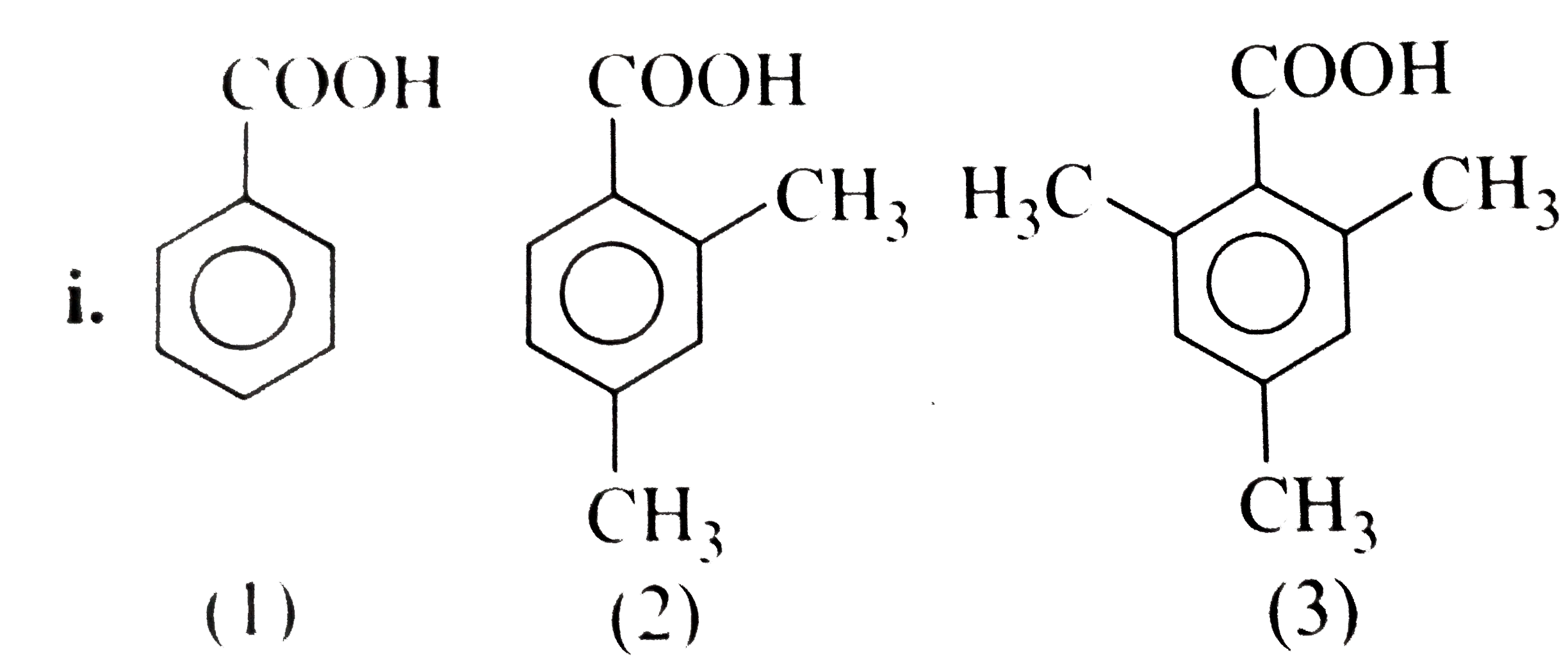Arrange the following in order of their increasing ease of hydrolysis :
CH3COOC2H5,CH3COCl,(CH3CO)2O,CH3CONH2.
Step by step video, text & image solution for Arrange the following in order of their increasing ease of hydrolysis : CH_(3) COOC_(2) H_(5), CH_(3) COCl, (CH_(3) CO)_(2) O, CH_(3) CONH_(2). by Chemistry experts to help you in doubts & scoring excellent marks in Class 12 exams.
Topper's Solved these Questions
- BOOK - IIT-JEE PREVIOUS YEAR (CHEMISTRY)CHAPTER - CARBOXYLIC ACID AND THEIR DERIVATIVESEXERCISE - (Topic II) OBJECTIVE QUASTION1videos
CARBOXYLIC ACID AND THEIR DERIVATIVES
- BOOK - IIT-JEE PREVIOUS YEAR (CHEMISTRY)CHAPTER - CARBOXYLIC ACID AND THEIR DERIVATIVESEXERCISE - Subjective Questions4videos
CARBOXYLIC ACID AND THEIR DERIVATIVES
- BOOK - IIT-JEE PREVIOUS YEAR (CHEMISTRY)CHAPTER - CARBOXYLIC ACID AND THEIR DERIVATIVESEXERCISE - CHAPTER TEST3videos
CARBOXYLIC ACID AND THEIR DERIVATIVES
- BOOK - IIT-JEE PREVIOUS YEAR (CHEMISTRY)CHAPTER - BIOMOLECULES AND CHEMISTRY IN DAILY LIFEEXERCISE - Chapter Test9videos
BIOMOLECULES AND CHEMISTRY IN DAILY LIFE
- BOOK - IIT-JEE PREVIOUS YEAR (CHEMISTRY)CHAPTER - CHEMICAL AND IONIC EQUILIBRIUMEXERCISE - INTEGER_TYPE1videos
CHEMICAL AND IONIC EQUILIBRIUM
Similar Questions
a. Acid halides, anhydrides, esters and amides, all of them contain (C=O) group but none of them gives test for (C=O) group, i.e., they do not form oximes, hydrazones, and DNP derivatives, etc. Why?
b. Arrange the following in the decreasing order of nucleophilic addition.
i. (1)−CHO
(2)−COCH3
(3)−COOH
(4)−COCI
(5)−CONH2
(6)−COOCH3
(7)−COOΘ
ii. (1)CH3CHO
(2)CH3COCH3
(3)HCHO
(4)CH2H5CH2COCH3
iii. (1)CH3COCH3
(2)C6H5COCH3
(3)C6H5COC6H5
(4)C6H5CH2COCH3
iv. (1)C6H5CHO
(2)ρ−CH3.C6H4.CHO
(3)ρ−OH.C6H4.CHO
(4)ρ−NO2.C6H4.CHO
(5)ρ−CI.C6H4.CHO
v. (1)HCHO
(2)CH3CHO
(3)CH3COCH3
(4)CI3CCHO
c. Arrange the following in the increasing order of ease of hydrolysis.
(1)CCH3COOC2H5
(2)CH3COCI
(3)(CH3CO)2O
(4)CH3CONH2
d. Arrange the following in the increasing order of ease of acid-catalysed esterification of:
i.
ii. (1)CH3CH2COOH
(2)(CH3)2CHCOOH
(3)(CH3)3CCOOH
iii. (1)CH3CH2CH2OH
(2)CH3CHOHC2H5
(3)(CH3)2C(OH)C2H5
e. Arrange the following esters in decresing order of ease of alkaline hydrolysis.
i. (1)HCOOCH3
(2)CH3COOCH3
(3)(CH3)3CCOOCH3
(4)(CH3)2CHCOOCH3
ii. (1)CH3COOCH3
(2)CH3COOC(CH3)3
(3)CH3COOCH(CH3)2
(4)CH3COOCH2CH3
iii. (1)C6H5COOCH3
(2)ρ−CH3O−C6H4−CCOOCH3
(3)ρ−NO2−C6H4−COOCH3
(4)ρ−Cl−C6H4−COOCH3View SolutionRearrange the followig in order of increasing ease of dehydrogenation:
CH3CH2CH2Cl,CH3CHClCH3,CH3CCl(CH3)2. ltBrgt Give reason.View Solution
Knowledge Check
- Question 1 - Select One
Which is leaving group in the hydrolysis of CH3COOC2H5 ?
AC2H+5BC2H5O−CCH3COO−DCH−3
Arrange the following in order of their
Increasing basicity: H2O,OH−,CH3OH,CH3O−View SolutionArrange the following compounds in increasing order of dipole moment :
CH3CH2CH3,CH3CH2OH,CH3CH2NH2View SolutionArrange the following compounds in increasing order of their boiling points :
CH3CHO,CH3CH2OH,CH3OCH3,CH3CH2CH3View SolutionArrange the following compounds in increasing order of their boiling points.
CH3CHO,CH3CH2OH,CH3OCH3,CH3CH2CH3View SolutionArrange the following compounds in the increasing order of their boiling points:
CH3CH2CH2CHO,CH3CH2CH2CH2OH,H5C2−O−C2H5,CH3CH2CH2CH3View SolutionArrange the following esters in the decreasing order of alkaline hydrolysis:
(i) HCOOCH3,CH3COOCH3,(CH3)3C−COOH3,(CH3)2CHCOOCH3
(ii) CH3COOCH3,CH3COOC(CH3)3,CH3COOCH(CH3)2,CH3COOC2H5View SolutionArrange the following compounds in increasing order of their boiling points.
CH3CHO,CH3CH2OH,CH3OCH3,CH3CH2CH3View Solution

